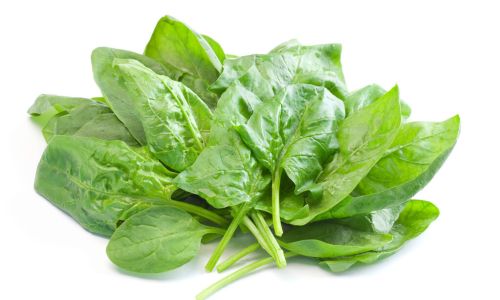Introduction
In the vast culinary landscape of Chinese cuisine, sweet and sour dishes occupy a unique and beloved niche. Among them, Sweet and Sour Pork Tenderloin stands out not only for its tantalizing flavor profile but also for its ability to bridge cultural palates, appealing to both seasoned food enthusiasts and adventurous eaters alike. This dish combines the tender, juicy texture of pork tenderloin with a vibrant, tangy-sweet sauce that dances on the taste buds, creating an experience that is both comforting and exhilarating. If you’re eager to learn how to craft this delightful dish at home, read on for a comprehensive guide that demystifies the process and ensures your kitchen transforms into a flavorful haven.

Understanding the Ingredients
Before diving into the recipe, it’s crucial to understand the role each ingredient plays in achieving the perfect balance of flavors. Here’s a breakdown:
- Pork Tenderloin: This lean cut of meat is chosen for its tenderness and mild flavor, which pairs well with the bold sauce.
- Marinade: Typically consisting of soy sauce, rice vinegar, garlic, and ginger, the marinade helps to tenderize the meat and infuse it with aromatic flavors.
- Breading: A combination of cornstarch and sometimes flour is used to coat the pork, ensuring a crispy exterior when fried.
- Sauce Ingredients:
- Ketchup: Provides the base sweetness and rich tomato flavor.
- Sugar and Vinegar: Balance each other out, creating the signature sweet-and-sour taste.
- Soy Sauce: Adds depth and a hint of saltiness.
- Pineapple Juice or Apple Cider Vinegar: Optional but recommended for an extra layer of complexity and freshness.
- Starch Slurry: Made from cornstarch and water, it’s used to thicken the sauce to the desired consistency.
- Garnishes: Sesame seeds, chopped green onions, or even a sprinkle of red pepper flakes can elevate the dish visually and add a touch of crunch or heat.
Step-by-Step Recipe
Preparation and Marination
Begin by trimming any excess fat or silver skin from the pork tenderloin. Cut the meat into thin strips, approximately 1/2 inch thick and 2-3 inches long. This ensures even cooking and makes the pieces easy to eat.
In a bowl, whisk together 2 tablespoons of soy sauce, 1 tablespoon of rice vinegar, 1 teaspoon of minced garlic, 1 teaspoon of grated ginger, and a pinch of black pepper. Add the pork strips to the marinade, ensuring they are well-coated. Cover the bowl with plastic wrap or transfer to a zip-top bag and marinate in the refrigerator for at least 30 minutes, preferably an hour or more. Marinating overnight will yield even more flavorful results.
Breading the Pork
While the pork is marinating, prepare a breading station. In a shallow dish, combine 1/2 cup of cornstarch with 1/4 cup of all-purpose flour (optional for extra crispiness). Season with a pinch of salt and pepper.

Remove the pork strips from the marinade, allowing excess liquid to drip off. Dredge each strip in the cornstarch mixture, pressing lightly to ensure an even coating. Place the breaded pork on a plate lined with parchment paper to avoid sticking.
Frying the Pork
Heat a large skillet or wok over medium-high heat and pour in enough vegetable oil to reach a depth of about 1/2 inch. Use a thermometer to maintain the oil temperature between 350°F and 375°F. This is crucial for achieving a golden, crispy exterior without overcooking the interior.
Working in batches to avoid overcrowding, carefully place the breaded pork strips in the hot oil. Fry for about 3-4 minutes, or until they turn golden brown and crispy. Use a slotted spoon or wire skimmer to transfer the fried pork to a plate lined with paper towels to drain excess oil.
Making the Sauce
In a clean skillet or saucepan, combine 1/2 cup of ketchup, 1/4 cup of granulated sugar, 1/4 cup of rice vinegar, 2 tablespoons of soy sauce, and 1/4 cup of pineapple juice or apple cider vinegar (if using). Whisk everything together until smooth. Bring the mixture to a simmer over medium heat, stirring occasionally.
To thicken the sauce, prepare a starch slurry by mixing 1 tablespoon of cornstarch with 2 tablespoons of cold water. Gradually pour the slurry into the simmering sauce, whisking constantly to avoid lumps. Continue to cook until the sauce reaches your desired consistency, which should be thick enough to coat the back of a spoon. Taste and adjust sweetness or tanginess as needed by adding a bit more sugar or vinegar.
Combining and Serving

Once the sauce has reached the perfect consistency, add the fried pork strips back into the skillet, gently tossing to coat each piece evenly with the sauce. Cook for an additional 1-2 minutes over medium heat, allowing the flavors to meld together.
Transfer the sweet and sour pork tenderloin to a serving dish, garnishing with sesame seeds, chopped green onions, or red pepper flakes as desired. Serve immediately with steamed rice, fried rice, or even a side of mixed vegetables to balance the meal.
Tips for Perfection
- Marination: Don’t skip this step. The longer the pork marinates, the more flavorful it will be.
- Temperature Control: Maintaining the correct oil temperature is key to achieving a crispy exterior without overcooking the meat.
- Sauce Consistency: Be patient when making the sauce. It should be thick enough to coat the pork but not too thick that it becomes gluey.
- Don’t Overcrowd the Pan: When frying, ensure there’s enough space for the pork strips to cook evenly without steaming each other.
- Garnishes: Don’t underestimate the power of garnishes. They add color, texture, and an extra layer of flavor.
Conclusion
Mastering the art of making Sweet and Sour Pork Tenderloin is a rewarding culinary journey that combines precision, patience, and a love for flavor. By following this detailed guide, you’ll be able to create a dish that not only satisfies your taste buds but also impresses friends and family. Whether you’re serving it as a main course for a dinner party or enjoying it as a comforting weeknight meal, Sweet and Sour Pork Tenderloin is a timeless dish that never fails to delight. Happy cooking!





0 comments